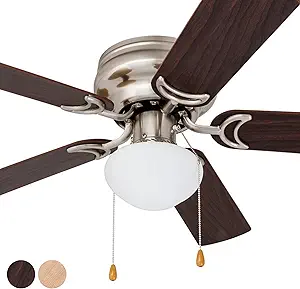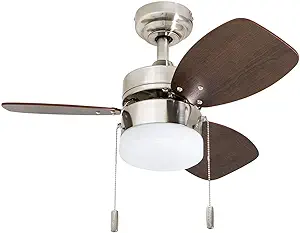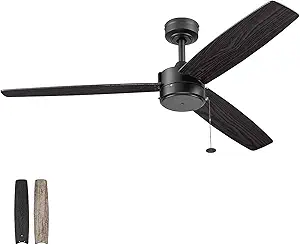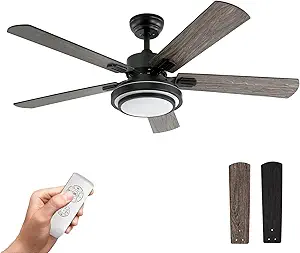The Ultimate Buying Guide for Ceiling Fans
Overview
Ceiling fans are an essential addition to any home or office. They provide a cool breeze during hot summer days, help circulate air, and can even save energy costs. However, with so many options available in the market, choosing the right ceiling fan can be a daunting task. This comprehensive guide will help you understand the different types of ceiling fans, key considerations to keep in mind, features to look for, prices, tips, and frequently asked questions.
Types
1. Standard Ceiling Fans: These are the most common type of ceiling fans, with a traditional design and a range of blade sizes. They are suitable for most rooms and come in a variety of styles and finishes.
2. Low-Profile Ceiling Fans: These fans are designed for rooms with low ceilings and have a shorter downrod to keep them closer to the ceiling.
3. Energy-Efficient Ceiling Fans: These fans are designed to save energy costs and come with features such as DC motors, LED lights, and smart controls.
4. Outdoor Ceiling Fans: These fans are designed to withstand outdoor elements and are perfect for patios, decks, and porches.
5. Dual-Motor Ceiling Fans: These fans have two motors and provide greater airflow and coverage. They are ideal for large rooms or open spaces.
Key Considerations
1. Room Size: The size of the room will determine the size of the fan you need. For example, a small room will require a fan with a blade span of 36 inches, while a larger room will need a fan with a blade span of 52 inches or more.
2. Ceiling Height: The height of the ceiling will determine the length of the downrod you need. For example, a standard 8-foot ceiling will require a downrod of 3-5 inches, while a higher ceiling will need a longer downrod.
3. Blade Pitch: The angle of the blades, or blade pitch, will determine the amount of air the fan can move. Look for a fan with a blade pitch of at least 12 degrees for optimal airflow.
4. Motor Quality: A high-quality motor will provide quiet operation, smooth performance, and long-lasting durability.
5. Style and Finish: Choose a fan that complements your room's decor and matches your personal style.
Features
1. Remote Control: A remote control allows you to adjust the fan's speed and direction from a distance.
2. Light Kit: A light kit provides additional lighting in the room and can be controlled separately from the fan.
3. Reversible Blades: Reversible blades allow you to change the direction of the fan's airflow, making it suitable for both summer and winter seasons.
4. Smart Controls: Smart controls allow you to control the fan and its features using your smartphone or voice commands.
5. Energy Star Certification: Look for fans with Energy Star certification, as they are energy-efficient and can save you money on your energy bills.
Prices
Ceiling fans range in price from $50 to $500 or more, depending on the type, size, and features. Standard ceiling fans are the most affordable, while energy-efficient and outdoor ceiling fans tend to be more expensive.
Tips
1. Choose a fan with a reversible motor for year-round use.
2. Install the fan in the center of the room for optimal airflow.
3. Use a longer downrod for high ceilings to ensure proper air circulation.
4. Consider the noise level of the fan when choosing a motor.
5. Look for a fan with a warranty for added protection.
FAQs
Q: What size fan do I need for my room?
A: Ans: The size of the room will determine the size of the fan you need. Use a fan size guide to determine the appropriate blade span for your room.
Q: Can I install a ceiling fan myself?
A: Ans: It is recommended to hire a professional electrician to install your ceiling fan for safety reasons.
Q: How do I clean my ceiling fan?
A: Ans: Use a soft cloth or a vacuum cleaner with a soft brush attachment to clean the blades and motor housing. Avoid using water or harsh chemicals.
Q: Can I use a ceiling fan in an outdoor space?
A: Ans: Yes, outdoor ceiling fans are designed to withstand outdoor elements and are perfect for patios, decks, and porches.
Q: What is the difference between a standard and energy-efficient ceiling fan?
A: Ans: Energy-efficient ceiling fans come with features such as DC motors, LED lights, and smart controls, which help save energy costs and reduce your carbon footprint.














